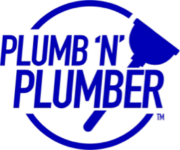Sewer Ejector Pumps
If your sewer line exits the home higher than the lowest fixture, you need a sewer ejector pump. For example, if you have a basement bathroom and the upstairs sewer exits above that basement floor, you’re going to need an ejector pump.
Many people don’t know the difference between a sewer ejector pump and a sump pump. Simply put, a sewer ejection pump is designed to handle human waste: a sump pump is designed to move a fluid. Just fluid, no solids. We’re happy to recommend each, depending on the situation and what’s best for your family and home.
Common Maintenance and Repair Issues
We don’t do a whole lot of maintenance on pumps. Typically they run their life and then we replace them. If there is maintenance on a lift station style pump (these pumps are thousands and thousands of dollars), we’ll replace float switches. For a residential pump, if it’s bad, we just put another pump in there.
Installation Process of a Sewer Ejector Pump
The first step is to drain the pit. Depending on the check valve, if it’s working or not, we have to drain the discharge line, open up the lid, make sure the whole area surrounding it is covered in plastic (You don’t want the feces particles all over your basement or the room it’s in).
After that, we’ll pull the pump, get it out without making a mess, put the new pump in, and set the float switch on the inside. A lot of times we add in high water alarms to let you know if that pump does go out and that water level in the tank gets too high.
We set the floats on that, make sure the base of the pit is all cleaned out, and make sure there’s nothing in the bottom that’s going to jam up the new pump.
After that, we’ll install the new pump, put the lid back on, seal it all up, test it, let it go!

